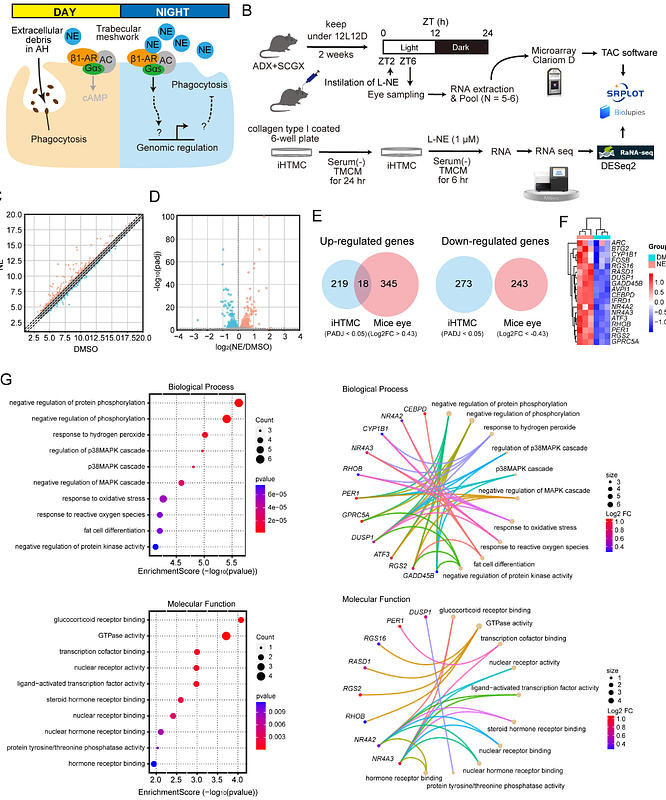Nocturnal intraocular pressure rise is regulated by norepinephrine via RHOB

Nocturnal intraocular pressure rise is regulated by norepinephrine via RHOB
Ikegami, K.; Takahashi, T.; Oishi, A.; Yoshimi, A.; Nagase, M.; Miki, A.; Yasuo, S.; Masubuchi, S.
AbstractIntraocular pressure (IOP), a key factor in glaucoma development, is regulated by aqueous humor (AH) dynamics, with inflow from the ciliary body and outflow through the trabecular meshwork (TM). IOP has a circadian rhythm entrained by sympathetic norepinephrine (NE) from the superior cervical ganglion. Herein, we investigated its underlying regulatory mechanisms in the TM. Through comprehensive gene expression analysis of human TM cells and mouse eyes, we identified 18 genes upregulated by NE stimulation, including the small GTPase RAS homologous protein B (RHOB). Promoter assays revealed RHOB upregulation via the cyclic adenosine monophosphate (cAMP) response element on its promotor. NE stimulation for 6-9 h increased RHOB level and cellular adhesion, and suppressed liquid permeability in the TM cells, indicating a time-dependent effect. RHOB deficiency increased TM macrophage phagocytosis and eliminated NE-induced suppression of phagocytosis and permeability, whereas RHOB overexpression had the opposite effect. Instillations of RHO or RHO-kinase inhibitors to mice eye reduced nocturnal and NE-induced IOP elevation. Our findings suggest that NE can elevate IOP via RHOB-mediated inhibition of TM phagocytosis, positioning RHOB as a potential glaucoma treatment target and IOP rhythm regulator.